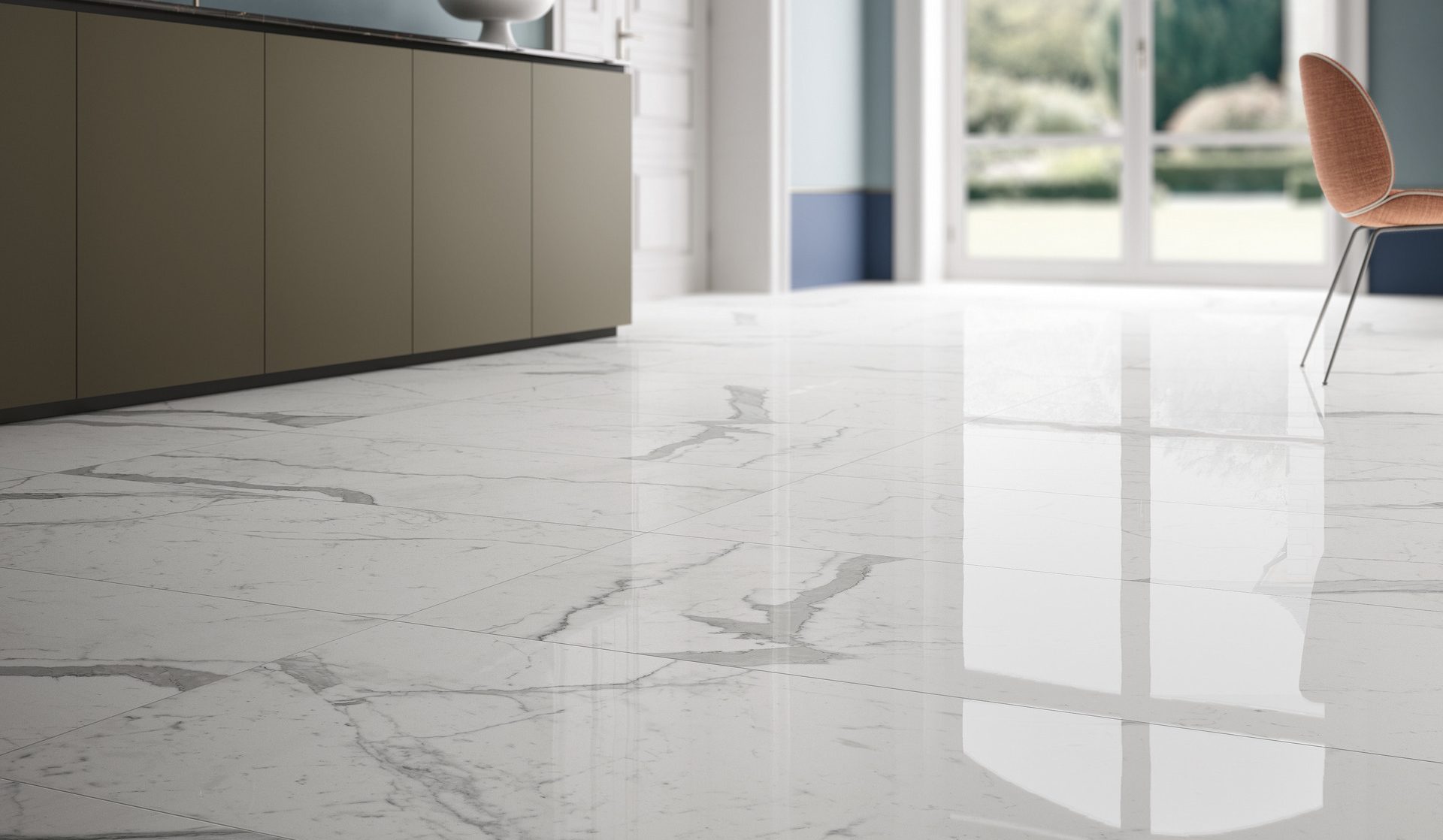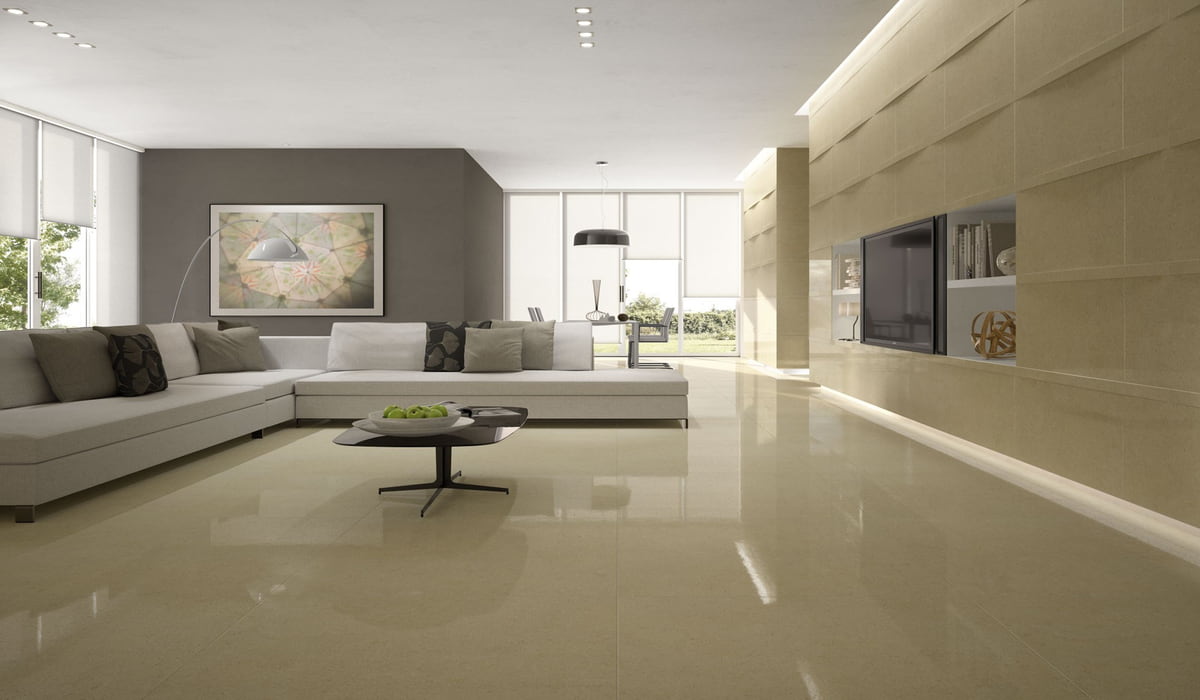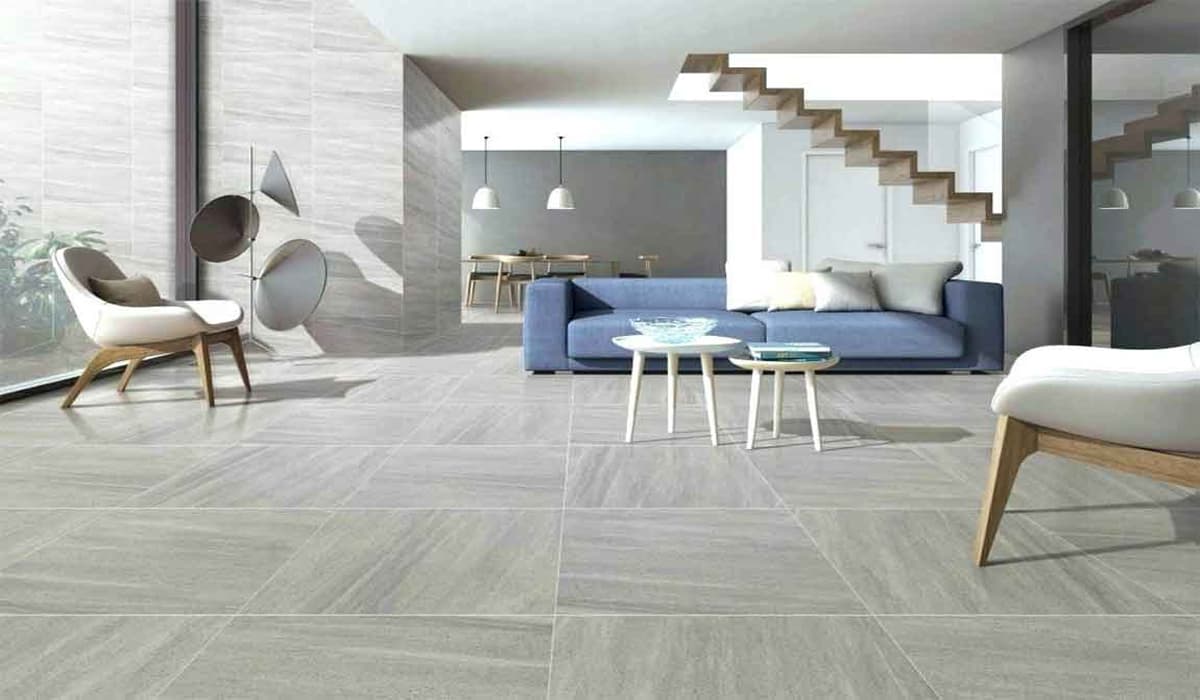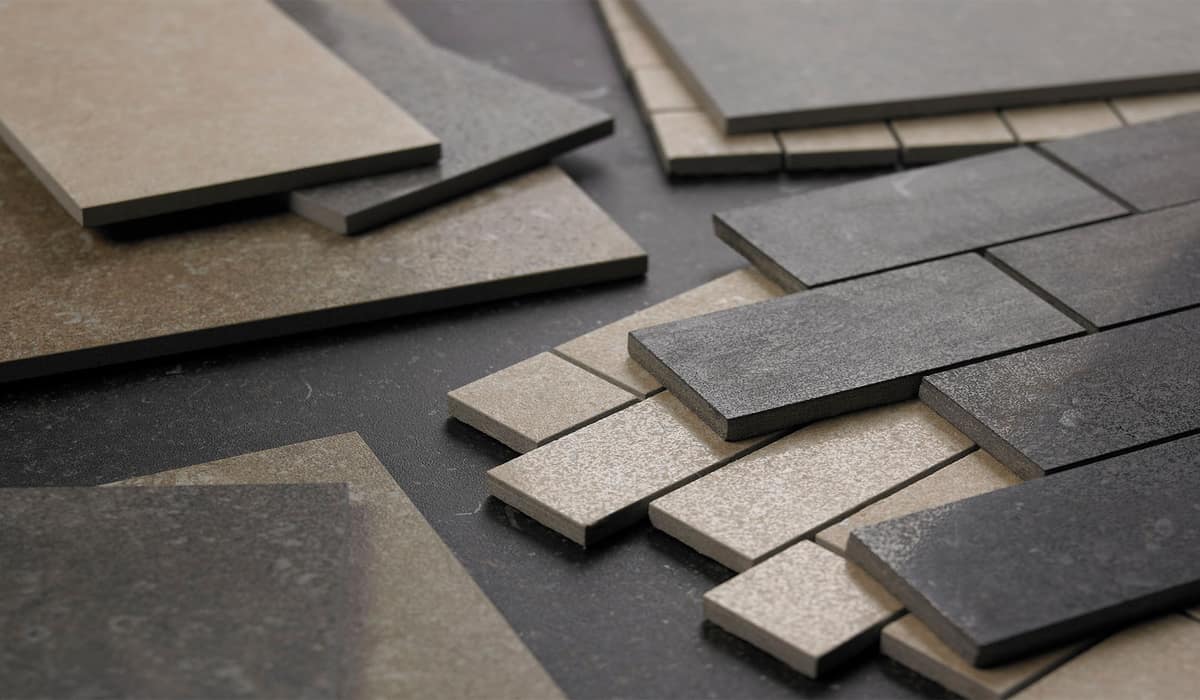It is for centuries that people on earth are enjoying ceramic tiles for different parts of their houses.
Besides, the production process and the cost of this valuable stuss has been always a zone of debate.
Wall and floor tiles used for internal and outdoor decoration are classified as white wares, a category of ceramics.
Ancient civilizations and peoples like the Egyptians, Babylonians, and Assyrians all produced tiles.
For instance, multicolored glazed tile was used in the Step Pyramid for the Pharaoh Djoser, which was constructed in ancient Egypt approximately 2600 B.C.
Later, practically every major European nation and the United States began producing ceramic tile.
By the start of the 20th century, tile production had reached an industrial level.
The manufacturing of tiles became more automated once the tunnel kiln was developed in 1910.
The production of tiles is now highly automated.
Tiles are broken down into a number of categories by the American National Standards Institute.
Ceramic mosaic tiles that are smaller than 39 cm2 in size can be either porcelain or made of natural clay (6 in.2).
Decorative wall tiles are thin-bodied, glazed tiles used to decorate interior walls in homes. Paver tiles are porcelain or natural clay tiles with a surface area of at least 39 cm2 (6 in.2).
They can be glazed or unglazed.
Porcelain tile is manufactured of ceramic mosaic or paver tiles using a process called dry pressing.
Quarry tile is identical in size to paver tile and can be created with or without glazing, but it is formed using a different technique.
Ceramic tiles manufacturing process
The manufacturing process of tiles are as below: Batching: Quantity and type of raw ingredients determine tile's body composition.
Depending on the quantity of iron-containing raw materials, the tile body can be red or white.
To acquire the required attributes, proportions must be exact.
Mixing and Grinding: After weighing, items are mixed in a shell, ribbon, or powerful mixer.
Two cylinders joined to create a V tumble and mix material in a shell mixer.
Ribbon mixers use helical vanes, while intense mixers use fast-rotating plows.
In this stage, components are finely powdered to aid the next forming process.
Spray drying: Spray drying is used to remove excess water after wet milling.
This requires pumping slurry to an atomizer with a rotating disk or nozzle.
Slip droplets heated by a rising hot air column dry into small, free-flowing grains.
Forming powder.
Forming: Dry-pressed tile is common.
A hopper feeds free-flowing powder with an organic binder or low moisture content into the forming die.
After being squeezed in a steel cavity, the bottom plunger releases the compressed material.
2,500-ton automatic presses are used.
Drying: Ceramic tile must be dried (at high relative humidity) after being created, especially if a wet technique is used.
Drying slowly enough to prevent shrinkage fractures takes days.
Gas, oil, infrared lamps, or microwaves are commonly used to heat continuous or tunnel dryers.
Thin tiles dry better with infrared than microwaves. Glazing: Glaze production is similar to tile production.
After batch formulation, raw ingredients are weighed, mixed, and dry- or wet-milled.
Milling glazes are applied using one of many ways.
Centrifugal glazing, often called discing, feeds glaze onto tiles via a rotating disc.
In the bell/waterfall method, a glaze stream is applied to a moving tile.
Sometimes glaze is sprayed.
Firing: After glazing, the tile must be heated to strengthen and give it the desired porosity.
Two types of kilns fire tile. Preparing wall or wet-milled tile needs two processes.
Before glazing, the tile is bisque-fired.
This stage removes volatile and most shrinkage.
The body and glazed tiles are then glost-fired together.
Both fire processes use a tunnel or continuous kiln, a chamber through which items are progressively transported on heat-resistant shelves or in saggers.
Ceramic tile plant machinery
SACMI is the pioneer technology in ceramic tile plant machinery.
Every single day, in order to track and establish new market trends, the SACMI Lab directs and participates in the development of innovative product design initiatives.
We collaborate with other businesses to develop eye-catching, high-quality industrial products that are manufactured by utilizing cutting-edge technology that is also kind to the environment.
The shop that is responsible for the preparation of the ceramic body makes use of technological advancements that are designed to make the entire procedure more efficient.
These advancements range from the automatic control of raw material loading and recipe dosage to the loading of powder into storage silos.
As a consequence of this, a greater level of performance is achieved in terms of the conservation of energy, control of the process, repeatability, and quality of the product.
Additionally, there are advanced features for predictive machine maintenance that can be utilized.
Ceramic porcelain tiles and slabs are manufactured by SACMI under conditions that are optimized for achieving the greatest possible levels of quality, productivity, and operational flexibility.
These conditions are ensured by the company's molding, drying, decorating, and fire lines.

The massive hydraulic presses, cutting-edge Continua+ technology, and Deep Digital decorating technology are examples of what the industry considers to be the most advanced technologies now available.
The new thermal equipment, which includes dryers and kilns, ensures that the highest quality standards are met while simultaneously lowering the amount of energy used and the impact on the environment.
Storage makes it possible to organize production in batches, which increases product turnover and boosts the efficiency of the ceramic manufacturing process.
Automatic vehicles are utilized for the processing of the byproducts of fires. Depending on the specifics of the job order, it may be possible to find a solution for large-scale ceramic production that involves the storage of burned product in an interim location, followed by surface polishing and format cutting.
When it comes to sorting and packaging tiles and slabs, SACMI offers a variety of different technologies.
Other possibilities for packaging include cardboard blanks ranging from medium to small in size, as well as trays for larger quantities.
Crates or trestles are typically used for the packaging of large slabs.

Raw material of ceramic tiles
The raw materials that are used to make tile consist of clay minerals that are obtained from the earth's crust, naturally occurring minerals such as feldspar that are used to lower the fire temperature, and chemical additives that are required for the shaping process.
Minerals are usually processed or beneficial in close proximity to the mine before being transferred to the ceramic plant.
The raw ingredients have to be reduced to a powder and then categorized according to their particle size.
Primary crushers are utilized to get the material down from its larger bits.
It makes use of either a jaw crusher or a gyratory crusher, both of which function by compressing steel between steel cones either vertically or horizontally, depending on the kind of crusher.
In order to produce particles, smaller lumps are first crushed.
Hammer mills and mullers are two common types of mills used.
The material is crushed using steel wheels in a shallow rotating pan in a muller mill, while in a hammer mill the material is crushed using fast swinging steel hammers.

There is also the possibility of utilizing crushers of the roller or cone sort.
It's possible that adding a third phase of particle size reduction is absolutely necessary.
Tumbling mill types require the use of grinding medium in combination with their operation.
The ball mill is one of the most common kinds of mills used for grinding materials into extremely fine powder.
It consists of large rotating cylinders that are only partially filled with spherical grinding medium.
Screens are applied in order to separate particles that fall within a specific size range.
They perform their work in an inclined posture while being mechanically or electromechanically vibrated in order to maximize the flow of material.
Screens are classified according to the mesh number, which is the number of apertures that are found on one linear inch of screen surface.
As the mesh number grows, the size of the opening will get increasingly smaller.
A glaze is a substance that is composed of glass and is designed to melt onto the surface of the tile while it is being heated, and then to adhere to the surface of the tile once it has cooled.
Glazes can create one-of-a-kind surfaces in addition to providing adornment and protection against moisture because of their ability to be colored.

Porcelain tiles
Porcelain, once it has been baked, is a consistent product that is formed of natural materials and is produced by subjecting them to great heat and pressure.
It is a white substance with a thick appearance.
Porcelain is a beautiful and pricey option that has the best attributes of the coating used on building facades and floors, and this product is currently the most advanced in the ceramics business.
Porcelain may be used to coat building facades and floors.
The benefits and drawbacks of using porcelain ceramics:
_High resistance to being bent (two to three times greater than that of granite stones)
_Low water absorption (below 0.1 percent) and resistance to frost are two of its defining characteristics (impermeable than stone)
_A high level of chemical resistance in addition to being resistant to stains (detergents and cleaning agents, acids and alkalis)
_A high level of resistance to wear (long life and high brightness)
_Increased roughness of the surface (no surface scratches and keeping a fine thickness)

Resistance of color to the sun (which is due to the lack of influence of high rays on its structure, which is not observed in natural stones).
_The capacity to manufacture in a variety of sizes, as well as the availability of imaginative, unbounded designs and colors.
_Placement in close proximity to towering structures and facades, with the possibility of dry installation also being an option (as an engineering tool it has the ability to consume equipment and install parts on it).
_It is not easily ignited (it is fire resistant and does not change its structure when exposed to heat).
Porcelain stones usage as raw material:
There are no restrictions placed on the locations in which porcelain ceramic tiles can be utilized, including the following: _where you make your home (campus, villa, ...)

_The bathroom and the commode _a variety of counters and staircases
_Perspectives both from the inside and the outside
_Streets and sidewalks _branches, companies, and other types of organizations _the factory (production hall, warehouse, ...)
_Schools, colleges, malls, schools, transfer stations, airports, subways, hospitals, health care facilities of all kinds, cafes, restaurants, hotels, and other lodging establishments are all examples of public spaces that must adhere to accessibility regulations.
_A crossroads for athletics, the arts, and culture It is for years that we are trading ceramic tile with the best quality and different quantities in several countries.
As a professional team in exporting ceramic tiles and slabs, we will be glad to work with professional traders from all over the world.




0
0